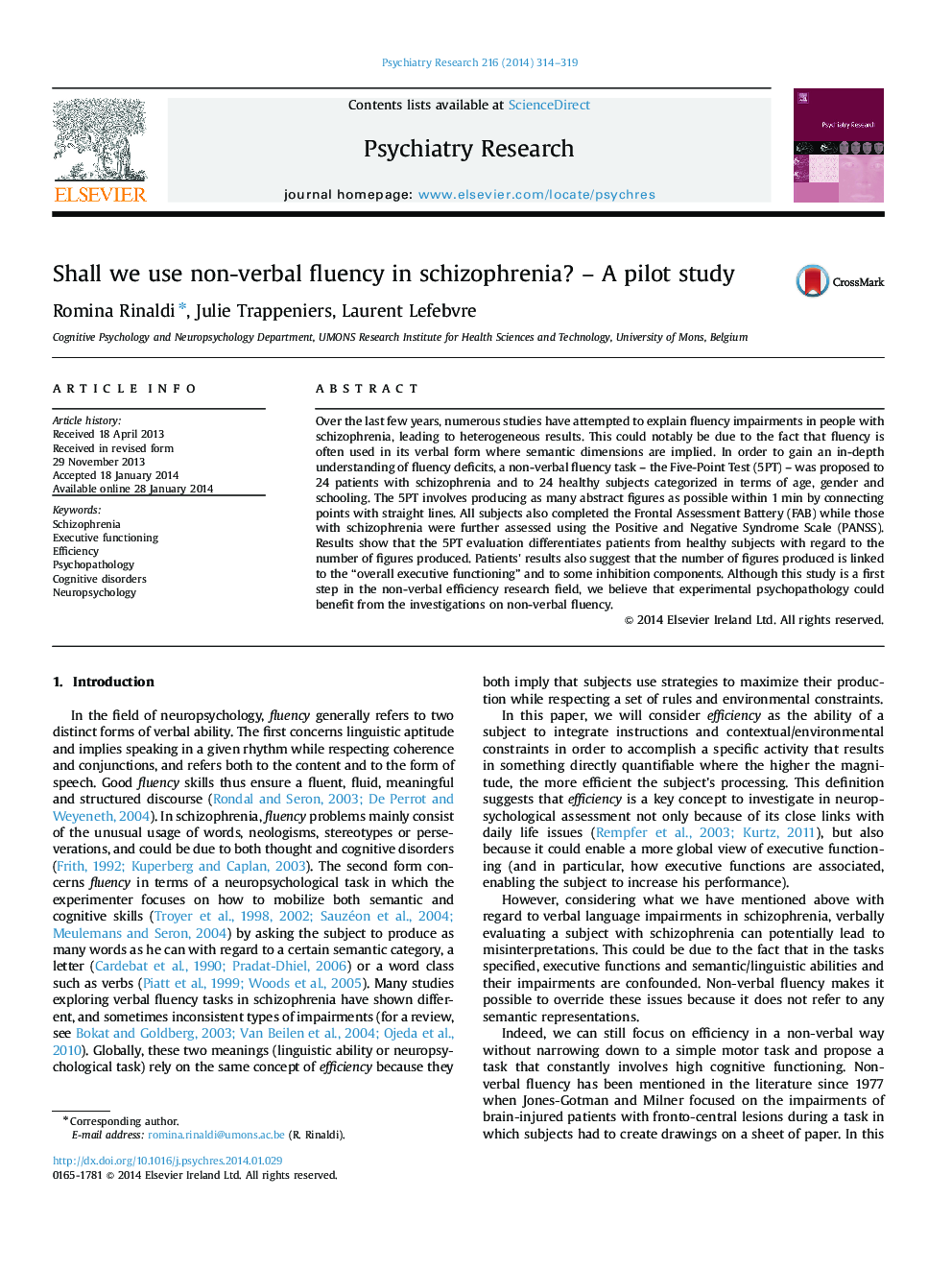| Article ID | Journal | Published Year | Pages | File Type |
|---|---|---|---|---|
| 10304985 | Psychiatry Research | 2014 | 6 Pages |
Abstract
Over the last few years, numerous studies have attempted to explain fluency impairments in people with schizophrenia, leading to heterogeneous results. This could notably be due to the fact that fluency is often used in its verbal form where semantic dimensions are implied. In order to gain an in-depth understanding of fluency deficits, a non-verbal fluency task - the Five-Point Test (5PT) - was proposed to 24 patients with schizophrenia and to 24 healthy subjects categorized in terms of age, gender and schooling. The 5PT involves producing as many abstract figures as possible within 1 min by connecting points with straight lines. All subjects also completed the Frontal Assessment Battery (FAB) while those with schizophrenia were further assessed using the Positive and Negative Syndrome Scale (PANSS). Results show that the 5PT evaluation differentiates patients from healthy subjects with regard to the number of figures produced. Patients׳ results also suggest that the number of figures produced is linked to the “overall executive functioning” and to some inhibition components. Although this study is a first step in the non-verbal efficiency research field, we believe that experimental psychopathology could benefit from the investigations on non-verbal fluency.
Keywords
Related Topics
Life Sciences
Neuroscience
Biological Psychiatry
Authors
Romina Rinaldi, Julie Trappeniers, Laurent Lefebvre,
